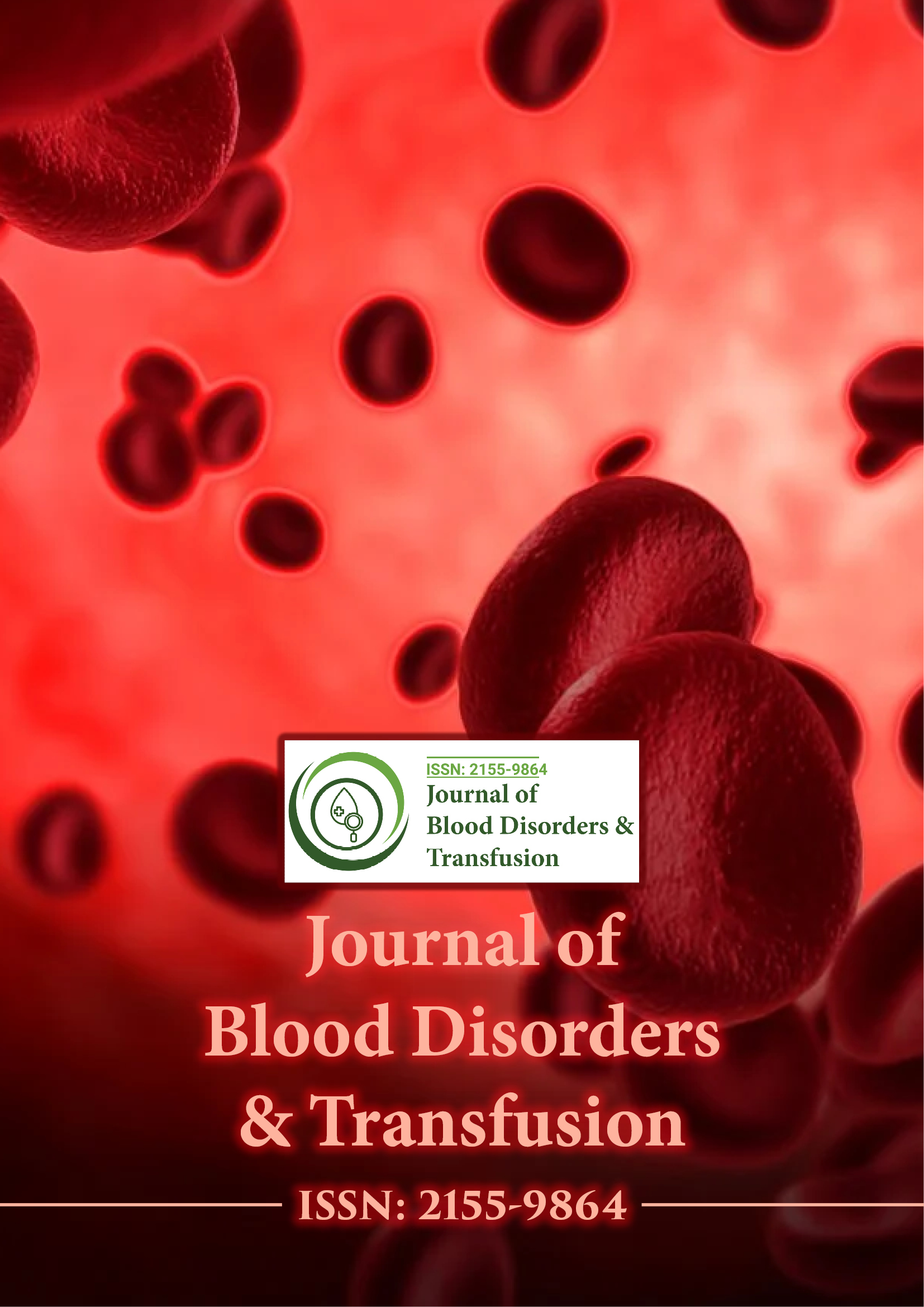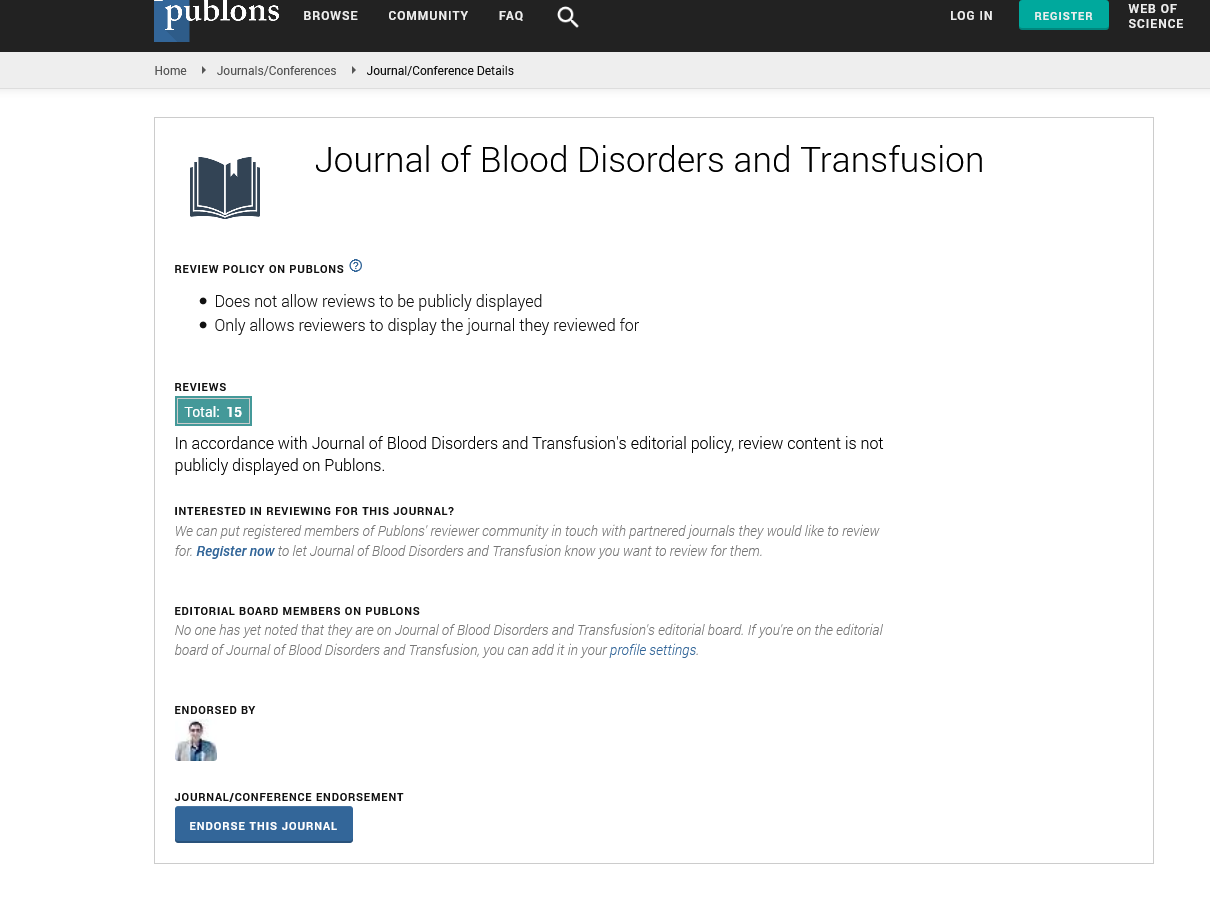Indexed In
- Open J Gate
- Genamics JournalSeek
- JournalTOCs
- Ulrich's Periodicals Directory
- RefSeek
- Hamdard University
- EBSCO A-Z
- OCLC- WorldCat
- Proquest Summons
- Publons
- Geneva Foundation for Medical Education and Research
- Euro Pub
- Google Scholar
Useful Links
Share This Page
Journal Flyer

Open Access Journals
- Agri and Aquaculture
- Biochemistry
- Bioinformatics & Systems Biology
- Business & Management
- Chemistry
- Clinical Sciences
- Engineering
- Food & Nutrition
- General Science
- Genetics & Molecular Biology
- Immunology & Microbiology
- Medical Sciences
- Neuroscience & Psychology
- Nursing & Health Care
- Pharmaceutical Sciences
Short Communication - (2025) Volume 16, Issue 2
Physical Properties of Clots Shaped by Red Blood Cell
Hannah Arnold*Received: 25-Feb-2025, Manuscript No. JBDT-25-28784; Editor assigned: 27-Feb-2025, Pre QC No. JBDT-25-28784 (PQ); Reviewed: 13-Mar-2025, QC No. JBDT-25-28784; Revised: 20-Mar-2025, Manuscript No. JBDT-25-28784 (R); Published: 27-Mar-2025, DOI: 10.4172/2155-9864.25.16.615
Case Description
The process of blood clot formation and its subsequent structural modifications are critical for maintaining vascular integrity and preventing hemorrhage. While platelets are traditionally considered the primary agents responsible for clot contraction, emerging evidence highlights a significant role played by Red Blood Cell (RBC) aggregation in clot shrinkage independent of platelet activity.
Blood clot architecture
Blood clots are intricate structures composed of fibrin networks, platelets, red blood cells and other cellular components. Upon vascular injury, the coagulation cascade initiates fibrin formation, stabilizing the initial platelet plug. Platelets interact with fibrin fibers and exert contractile forces, drawing the fibrin mesh together and reducing the overall clot volume. This process, known as clot retraction, helps restore blood flow around the clot and supports wound healing.
Traditionally, RBCs have been viewed as passive participants in this process, entrapped within the fibrin network. However, recent experimental findings suggest that RBCs can actively contribute to clot remodeling through mechanisms that do not involve platelets. One such mechanism involves the tendency of RBCs to aggregate, particularly under low-shear conditions, which influences the mechanical properties and volume of the clot [1–3].
Biomechanical properties of RBC
The biomechanical profile of a blood clot is largely determined by its cellular and fibrillar constituents. While platelets contribute actively through actomyosin-mediated contraction, RBCs influence clot rigidity and density through their collective interactions. Aggregated RBCs exert passive compressive forces as they settle within the fibrin network, creating a more compact and less porous structure.
Studies employing rheometry and atomic force microscopy have measured increased stiffness in clots with high RBC content, even in the absence of platelet-mediated contraction. These findings suggest that RBC aggregation imparts mechanical resilience to the clot, potentially enhancing its resistance to external stress and enzymatic degradation. However, such increased stiffness may also affect the susceptibility of the clot to pharmacological lysis, posing challenges in thrombolytic therapy.
Molecular determinants
Several molecular factors influence the aggregation of RBCs within clots. Fibrinogen concentration, ionic strength of plasma and the presence of acute-phase reactants modulate the strength and stability of erythrocyte interactions. Surface proteins on RBC membranes, such as glycophorin A and CD47, also play roles in mediating cell-cell adhesion and signaling.
Inflammatory states can amplify RBC aggregation by altering the plasma milieu, increasing the levels of fibrinogen and other adhesive proteins. This effect can promote more rapid clot consolidation and may contribute to the formation of occlusive thrombi in inflammatory and autoimmune disorders. Consequently, therapies targeting the plasma environment or RBC surface interactions may modulate clot structure and improve outcomes in thrombosis-prone individuals [4–7].
Fibrin structure and RBC packing
Fibrin architecture is essential for supporting RBC aggregation and guiding their spatial organization within the clot. The orientation, density and thickness of fibrin fibers determine the extent to which RBCs can deform and align into polyhedral configurations. In finely woven fibrin networks, erythrocytes experience greater mechanical compression, promoting tighter packing and more pronounced clot shrinkage.
Thrombolysis and clot resolution
The compacted nature of RBC-driven clots poses challenges for enzymatic clot dissolution. Reduced porosity and increased mechanical stiffness can impede the penetration of fibrinolytic agents, potentially lowering the efficacy of treatments such as Tissue Plasminogen Activator (TPA). In clinical settings, this may translate to delayed thrombolysis or incomplete clot breakdown, especially in strokes or myocardial infarction.
Understanding how RBC aggregation alters clot composition and resistance may help tailor anticoagulant or fibrinolytic therapies. Adjustments in dosing strategies or combination therapies could be explored to enhance drug delivery within compacted thrombi. Additionally, early detection of high-density clots may inform interventional decisions, such as mechanical thrombectomy [8–10].
Conclusion
The aggregation of red blood cells within a blood clot represents an active and significant mechanism of clot shrinkage that operates independently of platelet function. Through mechanical deformation, cellular alignment and biochemical interactions with fibrin, RBCs contribute to the structural integrity and compaction of thrombi. This perspective shifts the focus from platelets alone to a broader appreciation of erythrocyte behavior in coagulation biology.
References
- Liu S, Bahmani A, Sugerman GP, Yang Z, Rausch M, Ghezelbash F, et al. Adhesive and cohesive fracture of blood clots: Experiments and modeling. J Mech Phys Solids. 2024;193:105858.
- Litvinov RI, Weisel JW. Blood clot contraction: Mechanisms, pathophysiology, and disease. Res Pract Thromb Haemost. 2023;7(1):100023.
- Sefiane T, Maynadié H, Ettingshausen CE, Muczynski V, Heiligenstein X, Dumont J, et al. Differences in venous clot structures between hemophilic mice treated with emicizumab versus factor VIII or factor VIIIFc. Haematologica. 2023;109(6):1836.
- Wang X, Liu C, Liu C, Shi Z, Liu X, Huang F. A chitosan macroporous hydrogel integrating enrichment, adsorption and delivery of blood clotting components for rapid hemostasis. Int J Biol Macromol. 2024;281:136482.
- Fang Y, Lin Y, Wang L, Weng Y, Chen Q, Liu H. Clotting blood into an adhesive gel by hemostatic powder based on cationic/anionic polysaccharides and laponite. Biomacromolecules. 2024;25(6):3335-3344.
- Raska A, Egri B, Csikós P, Beinrohr L, Szabó L, Tenekedjiev K, et al. Synergism of red blood cells and tranexamic acid in the inhibition of fibrinolysis. J Thromb Haemost. 2024;22(3):794-804.
- Wang P, Zheng L, Yan S, Xuan X, Yang Y, Qi X, et al. Understanding the role of red blood cells in venous thromboembolism: a comprehensive review. Am J Med Sci. 2024;367(5):296-303.
- Kim DA, Ku DN. Structure of shear-induced platelet aggregated clot formed in an in vitro arterial thrombosis model. Blood Adv. 2022;6(9):2872-83.
- Karapetyan A, Niazyan L, Shushanyan R, Abgaryan T, Iritsyan S, Galechyan T, et al. Morphological abnormalities of peripheral blood cells among patients with COVID-19 disease. Heliyon. 2024;10(2).
- Palazzolo JS, Medcalf RL, Hagemeyer CE, Niego BE. A novel ex vivo approach for measuring plasminogen activation upon established plasma clots. Res Pract Thromb Haemost. 2022;6(5):e12771.
Citation: Arnold H (2025). Physical Properties of Clots Shaped by Red Blood Cell. J Blood Disord Transfus. 16:615.
Copyright: © 2025 Arnold H. This is an open-access article distributed under the terms of the Creative Commons Attribution License, which permits unrestricted use, distribution, and reproduction in any medium, provided the original author and source are credited.

